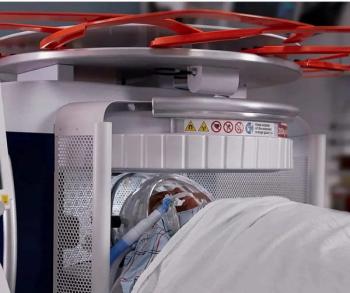
Current Perspectives on Prostate Cancer and Emerging Theranostic Agents, Part 2
In the second part of a recent interview, Emmanuel S. Antonarakis, M.D. discusses PSMA PET agents in current trials and cell surface proteins that may offer targeting utility in prostate cancer imaging beyond PSMA.
Discussing investigational prostate-specific membrane antigen (PSMA) positron emission tomography (PET) agents being evaluated in current trials for prostate cancer (PCa) imaging, Emmanuel S. Antonarakis, M.D., said copper CU-64 PSMA I&T, currently the subject of two separate ongoing studies, may offer potential advantages to the currently approved agents Ga-68 PSMA-11 and piflufolastat F18.
“(CU-64 PSMA I&T has) a higher tumor-specific uptake, which means that you could theoretically get improved lesion contrast with the potential to detect smaller lesions. Because of the longer half life, there's an option to do the imaging 24 hours or 48 hours after the injection of the agent, and that may concentrate better in the tumor as opposed to the adjacent normal organs,” noted Dr. Antonarakis, a Clark Endowed Professor of Medicine, director of genitourinary oncology and associate director for translational research with the Masonic Cancer Center at the University of Minnesota.
(Editor’s note: For additional insights on prostate cancer imaging, click
In addition to PSMA, other cell surface targeting approaches may offer potential utility in prostate cancer imaging, according to Dr. Antonarakis.
“There are other cell surface targets that we think are highly expressed in prostate cancer that could also one day become targets for imaging,” suggested Dr. Antonarakis. “For example, there's a protein called STEAP1 (Six-transmembrane epithelial antigen of prostate 1). There's a protein called B7-H3 and there's a protein called TROP2, and these are examples of cell surface proteins.”
(Editor’s note: For related content, see “
For more insights from Dr. Antonarakis, watch the video below.
Newsletter
Stay at the forefront of radiology with the Diagnostic Imaging newsletter, delivering the latest news, clinical insights, and imaging advancements for today’s radiologists.




























